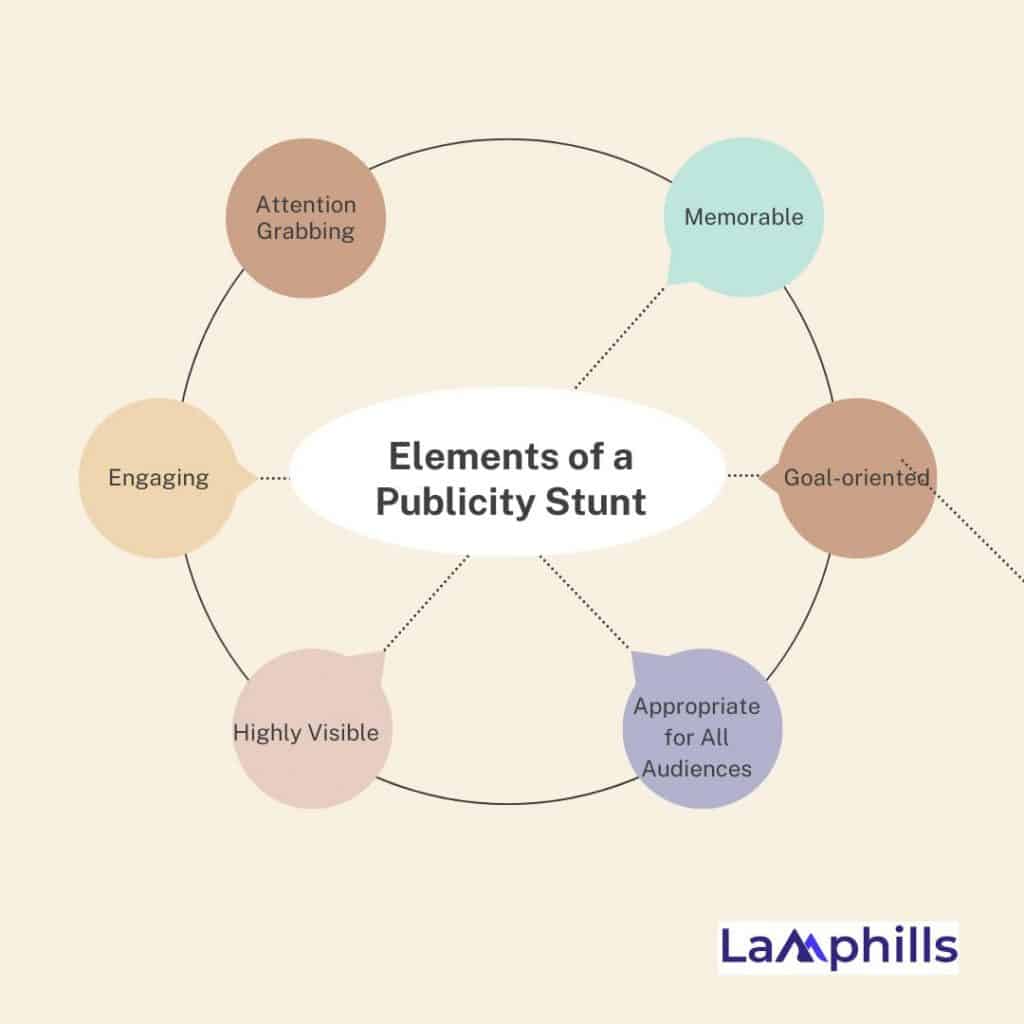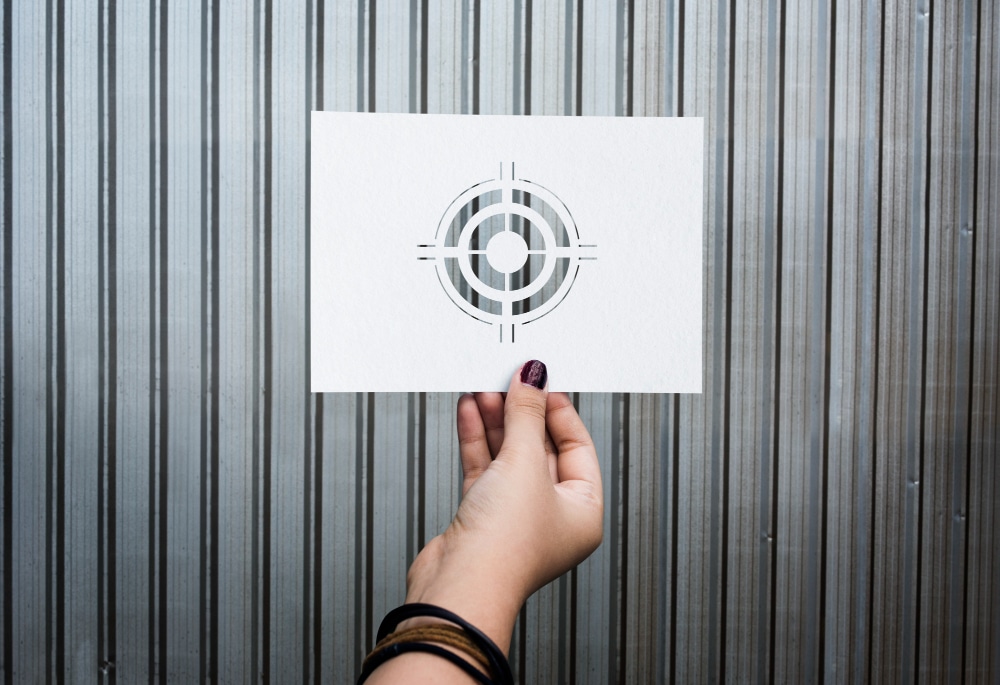It’s more challenging than ever to stand out in today’s digital market. Every day, customers, including you and me, are bombarded with countless advertisements, with each brand trying so hard to stand out from the other. Interestingly, a simple publicity stunt can do the trick and give your brand the visibility it so desires–if done well of course! Maybe you’ve never heard of that word before, but that’s why this article was written. I’ll admit I didn’t even understand the concept at first until I came upon a flash mob organised by a mobile gadget company to launch their new products. I decided to do my research, and here, I’ll show you what it takes to create a powerful publicity stunt that will not only attract people to your brand but keep them talking for a long time.
Key Points
- A publicity stunt is a planned event designed to attract public attention and media coverage.
- Companies use publicity stunts to generate buzz and media coverage, create a memorable brand image, drive engagements and encourage social sharing, as well as differentiate themselves from competitors.
- A good publicity stunt should be attention-grabbing, memorable, goal-oriented, appropriate for all audiences, highly visible, and engaging.
- Carrying out an effective publicity stunt involves setting clear objectives, researching and brainstorming ideas, detailed planning and logistics, engaging with media and influencers, post-stunt analysis and follow-up
What is a Publicity Stunt?
A publicity stunt is a planned event designed to attract public attention and media coverage. Unlike traditional marketing, which often relies on advertisements and promotions, publicity stunts are about creating a buzz through unexpected, memorable actions that capture the imagination.
Think of Richard Branson dressing as a flight attendant to promote Virgin Atlantic or when Burger King placed giant Whopper replicas in random locations to highlight their return. These stunts stand out because they break the norm, offering something unexpected that begs to be shared.
The History of Publicity Stunts
Publicity stunts have a rich history. One of the earliest masters was P.T. Barnum, whose sensational promotions for his circus acts in the 19th century set the bar for attention-grabbing antics. Over the years, these stunts have evolved, adapting to new media and cultural contexts. From physical events like Macy’s Thanksgiving Day Parade to digital phenomena like the ALS Ice Bucket Challenge, the essence of a good stunt remains the same: surprise and delight the audience.
Why Companies Use Publicity Stunts
Companies employ publicity stunts for various reasons:
- Generating Buzz and Media Coverage: A well-executed stunt can create a media frenzy, providing free publicity.
- Creating a Memorable Brand Image: Stunts that align with a brand’s identity can solidify its image in consumers’ minds.
- Engaging Audiences and Encouraging Social Sharing: Interactive and exciting events encourage people to share their experiences, amplifying the stunt’s reach.
- Differentiating from Competitors: A bold stunt can make a brand stand out in a crowded market.
Elements of a Successful Publicity Stunt

As wonderful as the idea of a publicity stunt may sound, it can have negative effects if not managed properly. An effective publicity stunt will have some of these common features:
#1. Attention Grabbing
The first thing a stunt does is get attention. That’s why it’s a stunt; everything about it is designed to grab attention. A publicity stunt should be big enough to get people talking. Once this is achieved, the stunt has served its purpose.
#2. Memorable
It’s one thing to get people talking, it’s another to keep them talking. Publicity stunts shouldn’t be a one-time experience only. A stunt should forever be recorded in people’s minds and referred to whenever the topic is discussed. A highly effective publicity stunt can influence other companies, especially your competitors, to implement a similar strategy.
#3. Goal-Oriented
I mentioned earlier that the primary goal of a publicity stunt is to generate attention, but without a goal, the stunt’s effect will easily fade. The goal explains why you’re planning the stunt in the first place and determines its effectiveness.
#4. Appropriate for All Audiences
A good publicity stunt should resonate with every audience, irrespective of their age group or demographics. If your company caters to people of all ages, you should create publicity stunts that are friendly for all ages.
#5. Highly Visible
In addition to being attention-grabbing, the publicity stunt should be easy to see. PR stunts should be designed to attract a large audience. If a publicity stunt cannot be seen by a large number of people, it is not properly organized. From physical presence to sponsored digital marketing campaigns, these stunts must be seen to be effective.
#6. Engaging
Publicity stunts are centered around community, even though it is easy to view them as nothing more than a random event or a tactic to get people talking. Because these stunts aim to start a conversation and discourse with the public, they are part of a public relations work. A good publicity stunt should always involve the community and invite participation.
Read Also: Interactive Facebook Posts: Level Up Your Marketing Strategy
Examples of Publicity Stunts
#1. Red Bull Stratos Space Jump
When Felix Baumgartner jumped from the stratosphere, breaking the sound barrier in the process, Red Bull redefined extreme sports and branded content. This stunt garnered global media coverage and billions of impressions, cementing Red Bull’s association with pushing boundaries.
#2. Tesla’s Cybertruck Window Shattering
Elon Musk’s demo of the Cybertruck’s “unbreakable” windows didn’t go as planned when the glass shattered. However, the incident generated massive media coverage and discussions, keeping Tesla in the spotlight.
#3. Jaguar’s Fastest Barrel Roll in a Car
When luxury automaker Jaguar released its first midsize SUV, it decided to make a media splash by teaming up with the Guinness World Records. To capture mass attention and show that Jaguar was capable of more than high-end sedans, it devised a scheme to break a world record. It completed the fastest barrel roll in a vehicle using its very own SUV. Jaguar used this stunt to show people how rugged its new SUV was. The awe-inspiring, dangerous stunt gained the media’s attention while helping to construct a sporty, more rugged brand image in the eyes of customers. So naturally, the affair increased interest in its new SUV.
#4. National Geographic’s Public T-Rex PR Stunt
What seemed to be an injured T-Rex (Tyrannosaurus rex dinosaur) fastened to the back of a flatbed truck was spotted roving the streets of London in what turned out to be a weird National Geographic publicity stunt. Naturally, the unexpected sight drew a lot of attention. You know, you don’t get to see this sort of thing every day, so it’s not surprising that It’s not every day you see a life-sized dinosaur replica, and never mind one being driven throughout the city. Not surprisingly, this put a lot of eyes on National Geographic and landed it a great deal of free press.
How to Plan and Execute a Publicity Stunt

Are you ready to create an engaging publicity stunt that will keep people talking, follow these strategies:
#1. Setting Clear Objectives: Define what you want to achieve.

Before embarking on any publicity stunt, you need to have a clear understanding of what you hope to accomplish. For instance, when my team was planning the flash mob stunt for our tech startup, our primary objective was to generate buzz and increase awareness of our brand and product launch. We wanted the stunt to spark conversations on social media, drive traffic to our website, and ultimately, drive more sales.
Defining your objectives will help you stay focused throughout the planning process. You’ll also be able to measure the success of the stunt against specific metrics, such as the number of social media mentions, website visits, and product inquiries.
#2. Researching and Brainstorming Ideas: Gather insights and develop creative concepts.
Research is important for the success of any publicity stunt. When brainstorming ideas, it’s important to draw inspiration from a variety of sources, including your target audience, industry trends, and cultural events.
#3. Create a Detailed Plan and Logistics
The devil is in the details when it comes to executing a publicity stunt. From securing permits to coordinating logistics and managing contingencies, you need detailed planning to ensure everything runs smoothly on the big day. For instance, when organizing the flash mob stunt, my team created a detailed timeline that outlined every step of the process, from rehearsals to costume fittings to the actual performance.
We also conducted thorough risk assessments and developed backup plans for potential challenges, such as inclement weather or technical issues. By mapping out every detail in advance and anticipating potential obstacles, we were able to mitigate risks and ensure that the stunt went off without a hitch.
#4. Engage with Media and Influencers
Building relationships with media outlets and influencers can significantly amplify the reach and impact of your publicity stunt. You can reach out to local journalists and bloggers to stir up interest, and partner with influencers to extend your reach to their followers.
#5. Post-Stunt Analysis and Follow-Up
Once the dust has settled and the effect of the stunt has worn off, it’s time to evaluate its impact and effectiveness. You can conduct a thorough analysis of key metrics, such as social media engagement, website traffic, and sales inquiries. You can also solicit feedback from participants and observers to gain insights into their reactions and how they perceive the stunt.
Based on this analysis, you can identify areas of strength and areas for improvement, informing your approach to future publicity stunts.
Here’s a detailed checklist for your review:
Risks and Ethical Considerations in Publicity Stunts
Publicity stunts are powerful enough to project your brand into the spotlight, but they come with significant risks. A poorly executed stunt can backfire and result in negative publicity that can damage your brand’s reputation. To prevent any of these from happening, you should carefully consider legal and safety issues and make sure to abide by ethical standards.
Legal and Safety Issues

Compliance with Laws and Regulations
When planning a publicity stunt, ensure that all activities comply with local laws and regulations. For example, if the stunt involves a public gathering, like a flash mob or an outdoor event, you may need permits from local authorities. Failure to obtain these necessary permissions can lead to fines, legal action, and unwanted negative attention.
Safety First
The safety of participants and bystanders should be a top priority. This means conducting thorough risk assessments and planning for potential hazards. For example, if your stunt involves physical activities or interactions, ensure that all safety measures are in place. When I organized the flash mob for our tech startup, we coordinated with the local police and emergency services to ensure that the event would be safe for everyone involved. This included setting up designated areas for participants and spectators and having medical personnel on standby.
Insurance
Depending on the nature of the stunt, it might be wise to obtain insurance coverage. This can protect your company from liability in case of accidents or unforeseen incidents. For instance, if your stunt involves extreme sports or high-risk activities, insurance is not just advisable but important.
Ethical Considerations
Cultural Sensitivity
A stunt that offends or isolates a segment of your audience can do more harm than good. It’s important to consider the cultural and social context in which your stunt will take place. For example, a stunt that might be humorous in one culture could be offensive in another. When planning a global campaign for a client, we made it a point to consult with cultural experts and conduct focus groups in different regions to ensure that our concept would be well-received worldwide.
Honesty and Transparency
Authenticity is key. Deceptive practices, such as fake endorsements or misleading information, can backfire and your brand will lose its trust. For example, if you’re creating a viral video campaign, it’s important to be transparent about any staged elements and to disclose partnerships with influencers. In a campaign we ran for a beverage company, we ensured that all influencer posts included clear disclosure of their partnership with the brand, which helped maintain transparency and trust.
Respect for Public Spaces and Property
Stunts that cause damage to public or private property can result in hefty fines and legal consequences. They can also generate negative publicity if the public perceives the brand as irresponsible. When planning our flash mob, we chose a location that would not disrupt daily activities or cause damage, and we ensured that the area was left clean and undisturbed afterward.
Impact on the Community
Consider the potential impact of your stunt on the local community. A disruptive event that inconveniences people or causes distress can lead to a backlash. For instance, a loud, disruptive event in a residential area could result in noise complaints and anger from residents. Engaging with the community beforehand and obtaining their support can help mitigate these risks.
Case Studies of Stunts Gone Wrong
Pepsi’s Kendall Jenner Ad
One of the most notable examples of a publicity stunt gone wrong is Pepsi’s 2017 commercial featuring Kendall Jenner. The ad was intended to pass a message of unity and peace but was widely criticized for trivializing social justice movements. The backlash was swift and severe, leading Pepsi to pull the ad and issue a public apology. This case highlights the importance of sensitivity to social and political issues and the potential consequences of misreading public sentiment.
Snapchat’s “Would You Rather?” Ad
In 2018, Snapchat faced backlash for an ad promoting a “Would You Rather?” game that made light of domestic violence, asking users if they would rather “slap Rihanna” or “punch Chris Brown.” The ad was deemed highly insensitive, especially given the history between the two celebrities. The backlash led to a significant drop in Snapchat’s stock value and a public apology from the company. This incident underscores the need for rigorous review processes to ensure content is appropriate and respectful.
Future Trends in Publicity Stunts
The future of publicity stunts lies in leveraging new technologies and trends. Augmented reality (AR), virtual reality (VR), and artificial intelligence (AI) offer exciting possibilities for creating immersive experiences. Additionally, there’s a growing emphasis on sustainability and social responsibility, with consumers appreciating brands that align with their values.
Are Publicity Stunts Good or Bad?
Publicity stunts can be both good and bad. When well-executed, they generate significant attention and positive engagement. However, poorly planned stunts can backfire, causing negative publicity and damaging your brand’s reputation. The success depends on your creativity, planning, and ethical considerations.
What Are The Advantages Of Publicity Stunts?
Publicity stunts generate significant buzz and media coverage, creating widespread awareness. They differentiate a brand from competitors, engage audiences, and encourage social sharing. Successful stunts can enhance brand image, foster emotional connections, and drive traffic and sales.
In Conclusion
Publicity stunts are a powerful tool in PR, capable of generating significant buzz and engagement. By balancing creativity with strategic planning, you can create memorable stunts that resonate with your audience and elevate your brand.
Related Articles
- All Publicity is Good Publicity: True/False (Detailed Analysis)
- How to Pull off a PR Stunt in 2024 With Examples
- PUBLIC RELATIONS SERVICES: The PR Blueprint for Getting Your Brand Noticed
- Unveiling the Power of Publicity: A Comprehensive Guide






